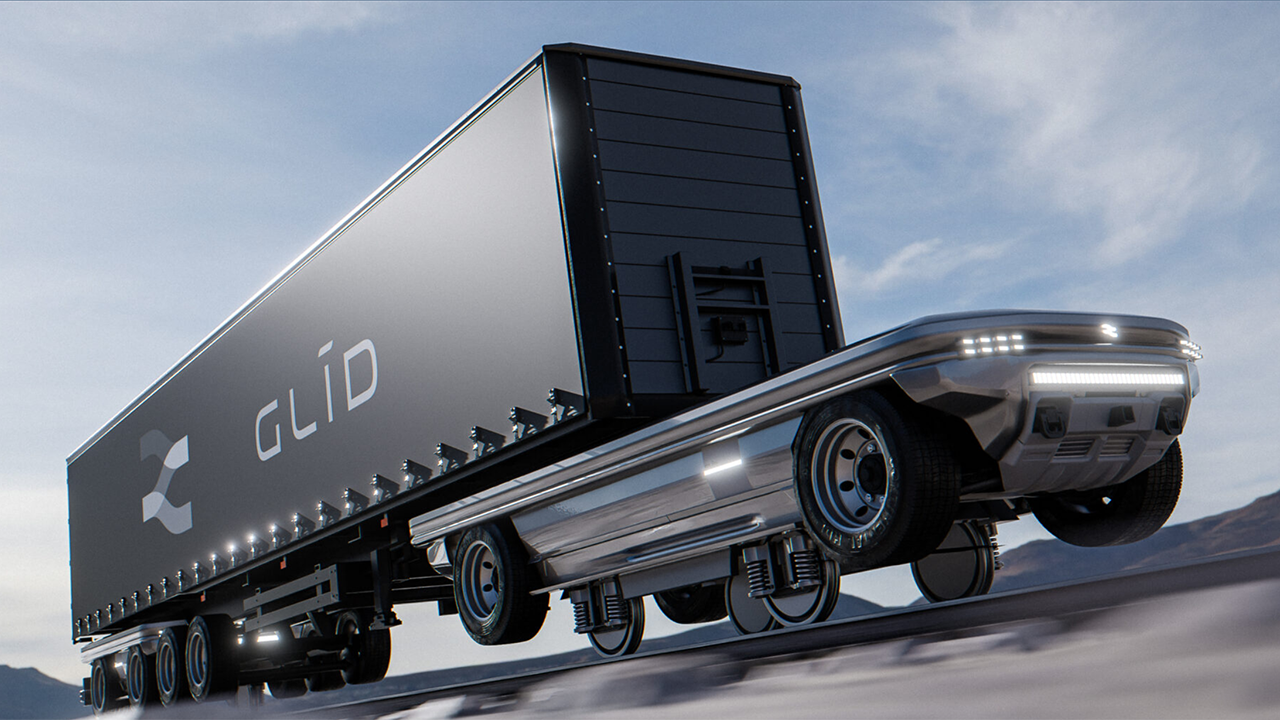Automobile Enthusiasts
Related: About this forum1983 Steinwinter Supercargo 2040 Cab is probably the strangest truck ever made
https://drivemag.com/news/1983-steinwinter-supercargo-2040-cab-is-probably-the-strangest-truck-ever-made/Posted on JULY 14, 2017 by DAN MIHALAȘCU
Just what were they thinking?
Trying to revolutionize an industry is never easy, especially one that's as complex and far-reaching as the transport of goods on roads. But one man called Manfred Steinwinter tried to do just that not too long ago.
For as long as people have hauled goods on roads, trucks have largely had the same shape — with the improvements brought by each generation change, obviously. But what Mr. Steinwinter proposed in 1983 was a radical modification of a semi truck's tractor.

He believed that reducing the tractor's height would lead to significant fuel savings as well as an increase in the volume of transported freight. And that's how the shocking Steinwinter Supercargo 20.40 Cab concept came to life.
Unveiled at the 1983 Frankfurt Motor Show, the truck study featured a tractor unit that measured just 1,170 mm in height, covered completely by the trailer. The unusual design allowed for an 18-meter-long loading area and a total cargo volume of 150 cubic meters.
[...]
mahatmakanejeeves
(68,018 posts)Layzeebeaver
(2,151 posts)it just needed the addition of an inflatable aeroshell/nosecone on the front of the container to make it more streamlined.
Reminds me of airport traction/towing vehicles.
True Dough
(25,633 posts)selling yours for parts, sl8?
![]()
sl8
(16,967 posts)Fingers crossed - it's looking like I'll be able to stand upright again in a year or so.
![]()
True Dough
(25,633 posts)"From sl8 to st8."
Best of luck!
YDogg
(6,683 posts)... in a custom Masters paint scheme, with yellow brake calipers.
taxi
(2,672 posts)allowing a straight in approach to loading docks, more versatile distribution of loads, and more flexibility in making numerous stops. On the negative side is the absence of landing gear - the legs that hold up the trailer when detached from the truck, the safety risk created by the diminished range of vision for the driver, and no sleeping quarters.
This truck would be well suited for local delivery but the lack of landing gear makes each truck less available for additional trips while loading. Also, while the range of vision could have been a problem in 1983, with the in-cab video available on today's vehicles that problem is lessened.
brush
(61,033 posts)with the low cap/cargo box atop it will just gulp the wind head on and be hell on fuel economy?
It's 40 years since it was introduced. I haven't seen any on the road. Tremendous fail.
If it ain't broke, don't fix it.
mahatmakanejeeves
(68,018 posts)PVJR, GEGI Partner on Autonomous Road/Rail Glīd
Written by William C. Vantuono, Editor-in-Chief

Portland Vancouver Junction Railroad (PVJR), a 33-mile Class III in Washington State, has entered a partnership with Salt Lake City-based tech startup Genesis Electronics Group Inc. (GEGI) to provide rail access to the company’s experimental autonomous battery-electric Glīd road/rail vehicle. Vancouver, Wash.-based trucking transportation and logistics company Taylor Transport is a participant in Glīd testing.
The Glīd is described as a vehicle “for moving unaltered semi-trailers on and off the rails.” Taylor Transport’s property has a rail spur directly connecting to the PVJR. GEGI signed a letter of intent with Taylor Transport in early April 2023. In October 2022, GEGI acquired Glīd, LLC, a Salt Lake City-based autonomous electric shipping technology firm.
Glīd is a wholly owned subsidiary of GEGI. Its technology is designed to enable “two specially made ‘Glīder’ vehicles to independently and autonomously move under an unaltered, fully loaded semi-trailer, connect to both the kingpin and rear axle, and then lift the trailer,” GEGI described. “Once the trailer is lifted off the ground, the Glīders, using a uniquely designed wheel system, will be able to access railroad tracks, deploy rail wheels [much like a hi-rail vehicle], and then transport the semi-trailer at speeds of up to 80 mph on battery power. Each Glīder would exit the rails onto a [facility] where a semi-tractor could then pick up the trailer and take it on the final leg of its destination.”
The PVJR/GEGI partnership is described as “the first in the U.S. to grant access to an autonomous electric vehicle to move unaltered semi-trailers on and off the rails.”
Glīd equipment and software can be resting while on the PVJR rail spur in Taylor Transport’s facilities. “Engineers will be able to test, observe and perform the necessary design and onsite modifications required to iterate and enhance its beta units for production deployment,” GEGI noted. “After certain testing standards have been met, the Glīd will be able to access longer stretches of PVJR track and begin to interface with its scheduling system as well as [determine compliance with FRA] safety standards. Meeting or exceeding [FRA] rail safety standards and system requirements is one of the highest priorities. The company wants to demonstrate that autonomous vehicles on the rails can be as safe if not safer than [crewed] locomotives. Working with PVJR will enable us to evaluate safety protocols in several environments and scenarios. Once the Glīd can demonstrate that it has passed these safety standards, we will have the opportunity to present this technology to other rail operators across the country, including Class I railroads.”

PVJR leases 33 miles of railroad from Clark County, Wash. between Vancouver and Chelatchie. Its interchange with BNSF (on BNSF’s Seattle Subdivision) is four miles north of Portland, Ore. in Vancouver, a short distance away from the Port of Portland and Port of Vancouver. The railroad also has access to I-5 and I-205.

PJVR shown in yellow at center-left on this OpenRailwayMap screen shot.
{snip}